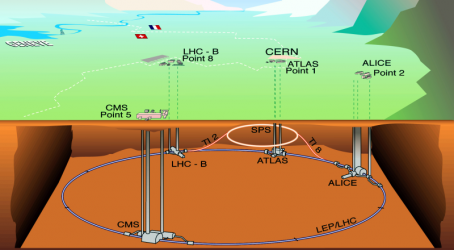Engineering news
British researchers from the Large Hadron Collider at CERN have today confirmed that they have found a new particle consistent with the long-sought Higgs Boson.
At a seminar held at CERN today the ATLAS and CMS experiments presented their latest results in the search for the Higgs particle. Both experiments see strong indications for the presence of a new particle in the mass region around 125- 126 GeV.
These results mark a significant breakthrough in our understanding of the fundamental laws that govern the universe, but positive identification of the new particle’s characteristics will take considerable time and data.
Speaking of the findings the universities and science minister David Willetts said: “This news from CERN is a breakthrough in world science. The UK has made an enormous contribution over the last 20 years supporting the search for the Higgs Boson. Our researchers, universities and industry partners have been instrumental in making the Large Hadron Collider such a success. They deserve recognition for their contribution to this scientific milestone that will change the way we look at the universe from now on. And of course Professor Higgs of Edinburgh University has now secured his place in history.”
Science and Technology Facilities Council chief executive Professor John Womersley added: “I’m delighted that we have indeed discovered a particle consistent with the Higgs boson! Obviously having found a new particle, there is still much, much more to do at the LHC – we need to confirm that this new particle is the reason some particles have tangible mass while others are insubstantial, as proposed by Peter Higgs and other scientists, who predicted that a particle like this one must exist for our current understanding of the Universe to work.”
The results from the experiments appear to show a dramatic 5 sigma signal. If this is indeed a new particle, then it must be a boson and it would be the heaviest such particle ever found.
The next step will be to determine the precise nature of the particle and its significance for our understanding of the universe.
The UK has played a central role in this research, from the theorists who formulated the model known as the Higgs mechanism, to the engineers and scientists who have designed, built and exploited the LHC. Currently 20 sites across the UK are involved in LHC research and data analysis.
The Large Hadron Collider (LHC) is the world’s largest and most powerful particle accelerator. It is located 100 metres underground near Geneva, where it spans the border between Switzerland and France.

10 LHC facts
- When the 27-km long circular tunnel was excavated, between Lake Geneva and the Jura mountain range, the two ends met up to within 1 cm.
- Each of the 6000-9000 superconducting filaments of niobium–titanium in the cable produced for the LHC is about 0.007 mm thick, about 10 times thinner than a normal human hair. If you added all the filaments together they would stretch to the Sun and back six times with enough left over for about 150 trips to the Moon.
- All protons accelerated at CERN are obtained from standard hydrogen. Although proton beams at the LHC are very intense, only 2 nanograms of hydrogen are accelerated each day. Therefore, it would take the LHC about 1 million years to accelerate 1 gram of hydrogen.
- The central part of the LHC is the world’s largest fridge. At a temperature colder than deep outer space, it contains iron, steel and the all important superconducting coils.
- The pressure in the beam pipes of the LHC is about ten times lower than on the Moon. This is an ultrahigh vacuum.
- Protons at full energy in the LHC travel at 0.999999991 times the speed of light. Each proton can go round the 27 km ring more than 11,000 times a second.
- At full energy, each of the two proton beams in the LHC have a total energy equivalent to a 400 t train (like the French TGV) travelling at 150 km/h. This is enough energy to melt 500 kg of copper.
- The Sun never sets on the ATLAS collaboration. Scientists working on the experiment come from every continent in the world, except Antarctica.
- The CMS magnet system contains about 10 000 t of iron, which is more iron than in the Eiffel Tower.
- The data recorded by each of the big experiments at the LHC will be enough to fill around 100,000 dual layer single-sided DVDs every year.